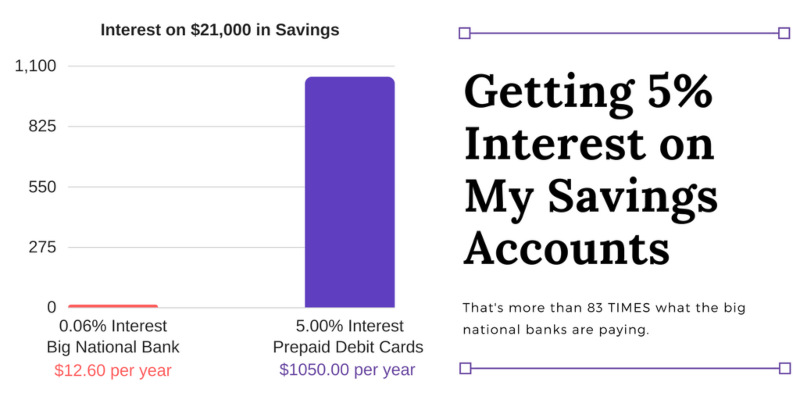What Is The Difference Between A Checking And A Savings Account?
Feb 17, 2024 By Triston Martin
Regarding financial management, savings and checking accounts have distinct purposes. It's not enough to have both accounts; you also need to know how to put them to use effectively. You might be debating whether a checking account or a savings account would serve your needs better when it comes to financial management. 5.4% of American homes are unbanked, meaning no one in the household has a bank account. That's roughly 7.1 million homes all over the United States. 1 Both checking and savings accounts serve various purposes and help you stay on top of your finances in different ways.
Savings Vs Checking
You can pay your bills, buy food and petrol, and get cash from an ATM using a bank account. A savings account is a place to put money aside for the long-term, whether for an unexpected expense or a big purchase like a vacation.
Checking Accounts: Cash For Everyday Use
The primary function of a checking account is to facilitate easy and frequent access to spending money, while the primary function of a savings account is to accumulate capital for future usage. Checking accounts are the most "transactional," as they provide on-the-go access to funds. Although both provide access to your funds, checking accounts may be more convenient. Debit cards, cheques, and even electronic payment systems like Apple Pay are common features of these accounts because they were created to facilitate quick access to your money. The quantity of withdrawals you can make from a savings account, on the other hand, is capped each month.
Long-Term Savings Accounts
A savings account is a good option when putting money aside for a future necessity or goal. Many people utilize savings accounts (rather than everyday purchases) to save up for more substantial future expenses. Your savings will increase gradually as interest is added to the account balance. This necessitates a trip to the bank, an online1 transfer, or a cash withdrawal from an ATM.
Do Interest Rates Apply To Checking And Savings Accounts?

Your savings balance and progress toward your goals can both benefit from interest. Unlike savings accounts, checking accounts typically do not earn interest. Consider a checking account as just that: a place to make and receive financial transactions. Although you might be able to discover a checking account that pays interest, checking accounts are not designed for saving and hence do not offer savings bonuses like interest. The interest rate on savings accounts is guaranteed to be positive. The term "annual percentage yield" refers to the effective rate of interest on a certain account every year (APY). It's wise to keep an eye out for the accounts that offer the highest annual percentage yield (APY) while you're comparing savings accounts. Discovering a savings account that offers a high annual percentage yield (APY) is the best way to maximize the growth of your funds.
What Effects Does Regulation D Have On Savings Accounts?
Regulation D, a rule of the Federal Reserve that differentiates between transaction and non-transaction accounts, mandates that consumers have a monthly maximum of six withdrawals or transfers from savings accounts. Since savings accounts are classified as "non-transaction accounts," they have transaction limits and penalties for exceeding them.
Is Your Money Safe In Your Checking And Savings Accounts?

Whether in a bank or a credit union, most depositors may rest easy knowing that their money is protected by the Federal Deposit Insurance Corporation (for credit unions). When a bank collapses, the FDIC protects depositors' money. Each depositor is protected for up to $250,000. Thus a joint checking or savings account might have up to $500,000 in funds. When you establish a bank account at an FDIC-insured bank, you can rest easy knowing that your funds are protected for up to $250,000, thanks to the support of the U.S. government.
Conclusion
Checking and savings accounts are necessary for making regular purchases and accumulating a financial emergency fund. Consider the features you value most and your financial goals when comparing checking and savings accounts. Considering these criteria, you might make different decisions. You may consider opening a high-yield online bank account if you intend to save as much money as possible. Keeping both accounts with the same financial institution can be convenient if you value bank loyalty.

Demystifying LLLPs: An Intro to Limited Liability Limited Partnerships
Explore the nuances of Limited Liability Limited Partnerships (LLLP), from its formation process and advantages to potential drawbacks and comparison with other business structures.
Feb 02, 2024 Triston Martin

A Complete Guide to What Is Bank Credit?
A "bank credit" is a loan that a bank offers to its customers to meet their personal or business needs, with or without a guarantee or collateral, to earn a periodic interest rate on the loan amount. At the end of the loan term, the principal will be returned to you, as agreed upon and stated in the loan agreement.
Jan 08, 2024 Triston Martin

Sears Home Warranty Review 2022 in Detail
Compared to other home warranty providers, Sears Home Warranty's 180-day warranty on approved repairs is quite lengthy. While three service plans are available nationwide (except in Alaska and Hawaii), the cost of optional upgrades is high. The whole contiguous United States other than Alaska and Puerto Rico are included in the coverage area.
Feb 06, 2024 Susan Kelly

Top 10 Tips for Financial Advisors
There has never been a better time in history to be a financial counsellor, regardless of what you've heard or read. There will be 10,000 Baby Boomers retiring every day over the next 15 years. In part, because they believe they lack enough, most individuals haven't figured out how to save for their golden years, which is understandable. In addition, see: Baby Boomer Investments: The Top 10 for more details.
Nov 29, 2023 Susan Kelly

How to Create a Savings Bond with Your Tax Refund
Using IRS Form 8888, you can designate how much of your refund should go to paper savings bonds and how much should go to you directly in order to purchase savings bonds (by check or by direct deposit to your bank account). You must also indicate who will own the bonds on Form 8888.
Oct 17, 2023 Triston Martin

Deferred Compensation Plans vs. 401(k)s: What’s the Difference?
Both types of plans, in general, defer payment because the employee has chosen to wait to get cash in hand to get some other benefit, such as delaying the payment of taxes on the money or investing while delaying the payment of taxes. Some examples of these types of benefits include: delaying the payment of taxes on the money or investing while delaying the payment of taxes.
Oct 16, 2023 Susan Kelly